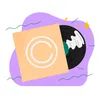Access for all, a balanced ecosystem, and powerful tools
Dec 06, 2021 – [[read-time]] minute read

Dec 06, 2021 – [[read-time]] minute read
Over the past few years, we’ve worked hard to build a suite of copyright management tools that gives rightsholders control of their copyrighted material on YouTube. These tools have allowed creativity to thrive, while giving creators and artists the tools and resources needed to manage their content online. Today, we’re releasing a new report, the Copyright Transparency Report, to shed more light on our copyright enforcement efforts on YouTube.
Copyright management at YouTube today consists of three main tools, and we work to match rightsholders with the appropriate tool based on their specific needs and resources, while also continuously expanding features and making new investments.
Through these investments in tools and underlying technologies, we’ve created a thriving ecosystem that balances the needs of creators, rightsholders, and viewers.”
Through these investments in tools and underlying technologies, we’ve created a thriving ecosystem that balances the needs of creators, rightsholders, and viewers — and in doing so, we’ve helped unlock a new creative economy that has paid more than $30 billion to creators, artists, and media companies over the last three years, and more than $4 billion to the music industry since March 2020, over 30% of which has come from user-generated content.
Today’s Copyright Transparency Report, which looks at data from the first half of 2021 and will be published biannually moving forward, provides new insight into how our tools operate at scale. There’s a lot of compelling information and metrics throughout, so here are a few highlights:
Over 722 million claims were made through Content ID in the first half of 2021, representing over 99% of all copyright actions on YouTube, and over 1.6 million removal requests were made using the Copyright Match Tool in the first half of 2021.

This chart shows unique claims or copyright removal requests made in the first half of 2021. Note that some videos may be subject to multiple claims or removal requests, such as when an individual video features more than one copyrighted asset, or multiple parties share ownership. A Content ID claim can convert to a copyright removal request at the claimant's request. In these cases, we have counted them as two separate actions: one Content ID claim and one copyright removal request.
As the report notes, we see low levels of disputes relative to total claims, particularly within tools that use automatic detection. In the first half of 2021, fewer than 1% of all Content ID claims were disputed.

This chart shows the total number of Content ID claims, and the proportion of those claims that are disputed by the uploader. Claimants have 30 days to review the dispute and decide whether to release the claim, uphold the claim, or issue a removal request. If they don’t respond within 30 days, the claim expires.

If the claimant chooses to uphold their claim or file a copyright removal request in response to a dispute, the claim is considered to have resolved in favor of the claimant. Alternatively, after receiving a dispute the claimant may choose to release the claim, or may allow the claim to expire after 30 days. In either case, the claim is removed from the video and is considered to have resolved in favor of the uploader.
We are committed to making sure that YouTube remains a vibrant community with strong systems in place to enable rightsholders to manage their content on YouTube, and we look forward to the next update of the Copyright Transparency Report.
Download the Copyright Transparency Report here.